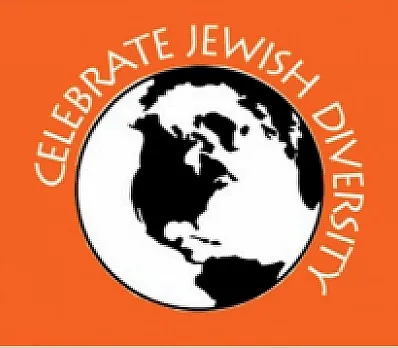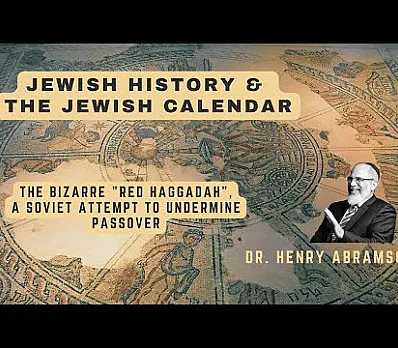Garlic on the Seder Plate
GARLIC ON THE SEDER PLATE
Dori Midnight
I began placing garlic on our seder plate a few years ago, as it has been central to my work of reconnecting to and re-enlivening Jewish folk healing traditions and a lifelong love. After the birth of Nishmat Shoom (the queer, radical, non-zionist minyan project I am part of, whose name, inspired by this work, means Breath or Soul of Garlic), many of the Garlic Eaters in our community began adopting this practice and it has slowly crept its stinky way into many homes. For me, garlic is a symbol for reconnecting with and revealing ancestral healing and protection practices and divesting from harmful practices and institutions that offer an illusion of safety at the expense of others. Garlic helps us remember that policing, borders, militarism - violent practices based in settler colonialism and xenophobia - don’t make anyone safe. Garlic, whose teaching moves on scent and taste, reminds us of times, past and future, in which people build a sense of protection and rootedness through connection to plants, stones, celestial bodies, soil, water, ancestral stories, with the Divine and with each other.
Garlic is braided throughout our sacred texts - held as a specific delight of shabbat, as medicine and as amulet. The term “Garlic Eaters” is found in the Talmud; Jews have identified ourselves as “Garlic Eaters” for thousands of years. Conversely, we also been identified as Garlic Eaters as an antisemitic trope - from the Roman empire through the present, Jews have been targeted and persecuted for our affinity and association with this powerful plant. There are numerous tales from the Spanish Inquisition of inquisitors tracking down the scent of garlic to Jewish homes and killing Jews just for cooking with it. There is an abundance of antisemitic garlic-based paraphenalia in Medieval Europe, including images of Jews clutching a bag of money in one hand and a fistful of garlic in the other and texts about the “Foeter Judaica”, the Jewish Stink. We know that one tool of oppression is to try to separate people from something that is deeply beloved and to criminalize, stigmatize, and pathologize practices and traditions that sustain, nourish, and connect people. We also know that these days, not many Jews even know about this long term, profound connection with garlic. A fifth question for Passover might be why? What happens when we lose these ancestral traditions and ancient blessings of protection? What do we turn to for protection when we’re stripped of or abandon traditions of community care and interdependence? What happens when centuries of trauma/assimilation/modernization/xenophobia separate us from the pungent blessing of garlic and seed us with shame about smelling like garlic?
A story in my family is that my great grandmother Rae carried cloves of garlic in her bra and pocketbook as protection against the evil eye. My mother placed garlic in my ears and fed me raw garlic when I was sick. The Talmud teaches that garlic “brightens the face, warms the body, and instills love.” Garlic has abundant medicinal benefits, including supporting heart health, bone health, digestive and immune support. Garlic is life giving - it increases our vitality, fertility, and longevity. Garlic is community medicine- it’s antimicrobial and antiviral properties keep us well. Valued for these gifts through many pandemics and plagues, garlic has supported many of us through COVID-19. (Check out this Yiddish plague song from 1918 singing the praises of garlic!) It’s easy to grow, easy to find, and makes everything taste infinitely better. Garlic, which is in a way it’s own community, teaches us about how to be our own little clove, but stay connected to the whole bulb.
Jewish folk wisdom from throughout much of the diaspora tells us that cloves of garlic were often tucked into pockets and pouches, hung on windows and doors, placed under the pillow in labor, and strung onto necklaces for protection. Garlic supports, thrives in, and embodies diaspora: it can travel in hand, pocket, bag, wagon, across land and sea, past the imaginary borders drawn by empire. It carries the dream of generations and exponential possibility: the one becomes many, the many become many more. First grown in the Fertile Crescent, it has traveled with Jews for thousands of years, weaving its way through the diaspora - a flavor present in many dishes in various Jewish cultures. And just as the bulb waits all winter underground and emerges in time, the garlic wisdom my great grandmothers planted in the dark, after many generations, has yielded, unfolded, miraculously multiplied in me, in us.
Garlic protects through zesty and pungent stink, keeping individuals and communities well, holding boundaries while also holding us close. As we re-enliven traditions of protection that are about presence, about being really alive, about unapologetic stink, about being who we are as a form of protection, we can release all the harmful structures, internal and external, that we, and our ancestors, may have adopted to try to keep ourselves safe. We release all the ways in which we have hidden to survive, ways in which we have sought safety at the expense of others, ways in which we have been separated from our traditions, from ourselves and each other in the maw of neoliberalism, assimilation, forced migration, oppression, modernity, and collective trauma. It is heartbreaking and true that many Jews (and non-Jews) have invested in extremely harmful institutions for the sake of the illusion of safety - borders, militarism, Zionism, policing, the carceral system. And it is also true that many of us dedicate our lives to abolishing these structures and seek to undo the patterns inside ourselves as well. Abolitionist Ruth Wilson Gilmore says, “Abolition is about presence, not absence. It is about building life-affirming institutions.” As we divest from harmful structures, we need to cultivate, remember, and nurture life affirming practices that weave safety and belonging for everyone. Garlic reminds us that safety is built through solidarity, through connection, through collective wellbeing. Garlic as torah! Garlic as life affirming practice! Garlic breathes the vital breath of abolitionist theology and grows our capacity for change and being more fully alive.
Every year, we practice liberation at Pesach, and every year, we can weave old and new practices that support us to get freer and make freedom more possible for everybody, everywhere. Garlic in our pockets, on our seder plates, hung in our doorways - they are all altars in a way. At Passover, we eat ritual foods to embody and to remember, and we craft new traditions as we need them~ we place an olive for Palestinian solidarity, an orange for queer liberation, a spoon for diasbility justice. This year you are invited to place garlic on your seder plate, as intention, remembrance, and commitment to practice collective care and co-liberation, and cultivating a sense of safety rooted in aliveness and connection.
Favorites 2021
- Introduction
- Kadesh
- Urchatz
- Karpas
- -- Cup #2 & Dayenu
- Yachatz
- Maggid - Beginning
- -- Four Questions
- -- Four Children
- -- Exodus Story
- -- Ten Plagues
- Rachtzah
- Motzi-Matzah
- Maror
- Koreich
- Shulchan Oreich
- Tzafun
- Bareich
- Hallel
- Nirtzah
- Conclusion
- Commentary / Readings
- Songs
Inspired to create
your own Haggadah?
Make your own Haggadah and share with other Seder lovers around the world
Have an idea
for a clip?
People like you bring their creativity to Haggadot.com when they share their ideas in a clip
Support Us
with your donation
Help us build moments of meaning and connection through
home-based Jewish rituals.
OUR TOP CONTRIBUTORS
Passover Guide
Hosting your first Passover Seder? Not sure what food to serve? Curious to
know more about the holiday? Explore our Passover 101 Guide for answers
to all of your questions.






















